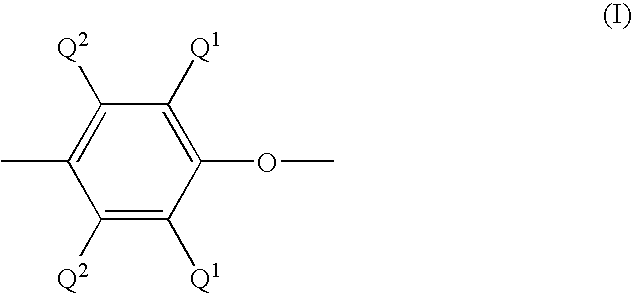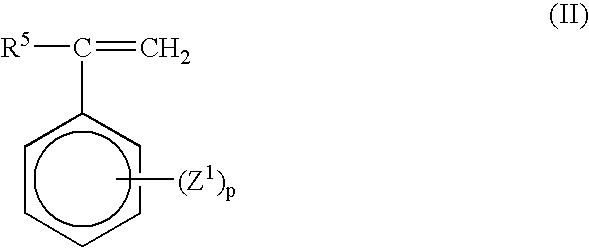Flame retardant resin compositions
a thermoplastic resin and composition technology, applied in the direction of plastic/resin/waxes insulators, dyeing process, application, etc., can solve the problems of halogen compound formation, undesirable behavior, dripping of flaming polymer materials, etc., to preserve heat deflection temperature and flame retardance of thermoplastic resins, effective flame retardance performance, and modulus property reduction
- Summary
- Abstract
- Description
- Claims
- Application Information
AI Technical Summary
Benefits of technology
Problems solved by technology
Method used
Image
Examples
example 2
A second control resin formulation was prepared by intimately blending Noryl 190 X thermoplastic resin with RDP in an amount of 12 parts of RDP for every 100 parts of thermoplastic resin.
A portion of the second control resin formulation was taken and extruded in a WP ZSK25 extruder at a feed rate of 33 pounds per hour, at a screw speed of 300 rpm and 57 to 59 percent torque. The extrudate was then tested for flame retardance, flow, Izod impact, tensile properties and heat deflection temperature. The results obtained are given in Table 1 below.
example 3
An additive composition was prepared by intimately blending pentaerythritol into a portion of the second control resin formulation (prepared in Example 2) such that the amount of pentaerythritol is 1.5 parts by weight for every 100 parts of the thermoplastic resin.
The resin formulation so obtained was extruded under the same conditions as in Example 1. The extrudate was then tested for flame retardance, flow, Izod impact, tensile properties and heat deflection temperature. The results obtained are given in Table 1 below.
example 4
An additive composition was prepared by intimately blending pentaerythritol into a portion of the second control resin formulation (prepared in Example 2) such that the amount of pentaerythritol is 1.0 parts by weight for every 100 parts of the thermoplastic resin.
The resin formulation so obtained was extruded under the same conditions as in Example 1. The extrudate was then tested for flame retardance, flow, Izod impact, tensile properties and heat deflection temperature. The results obtained are given in Table 1 below.
PUM
| Property | Measurement | Unit |
|---|---|---|
| thickness | aaaaa | aaaaa |
| temperature | aaaaa | aaaaa |
| thickness | aaaaa | aaaaa |
Abstract
Description
Claims
Application Information
 Login to View More
Login to View More - R&D
- Intellectual Property
- Life Sciences
- Materials
- Tech Scout
- Unparalleled Data Quality
- Higher Quality Content
- 60% Fewer Hallucinations
Browse by: Latest US Patents, China's latest patents, Technical Efficacy Thesaurus, Application Domain, Technology Topic, Popular Technical Reports.
© 2025 PatSnap. All rights reserved.Legal|Privacy policy|Modern Slavery Act Transparency Statement|Sitemap|About US| Contact US: help@patsnap.com



